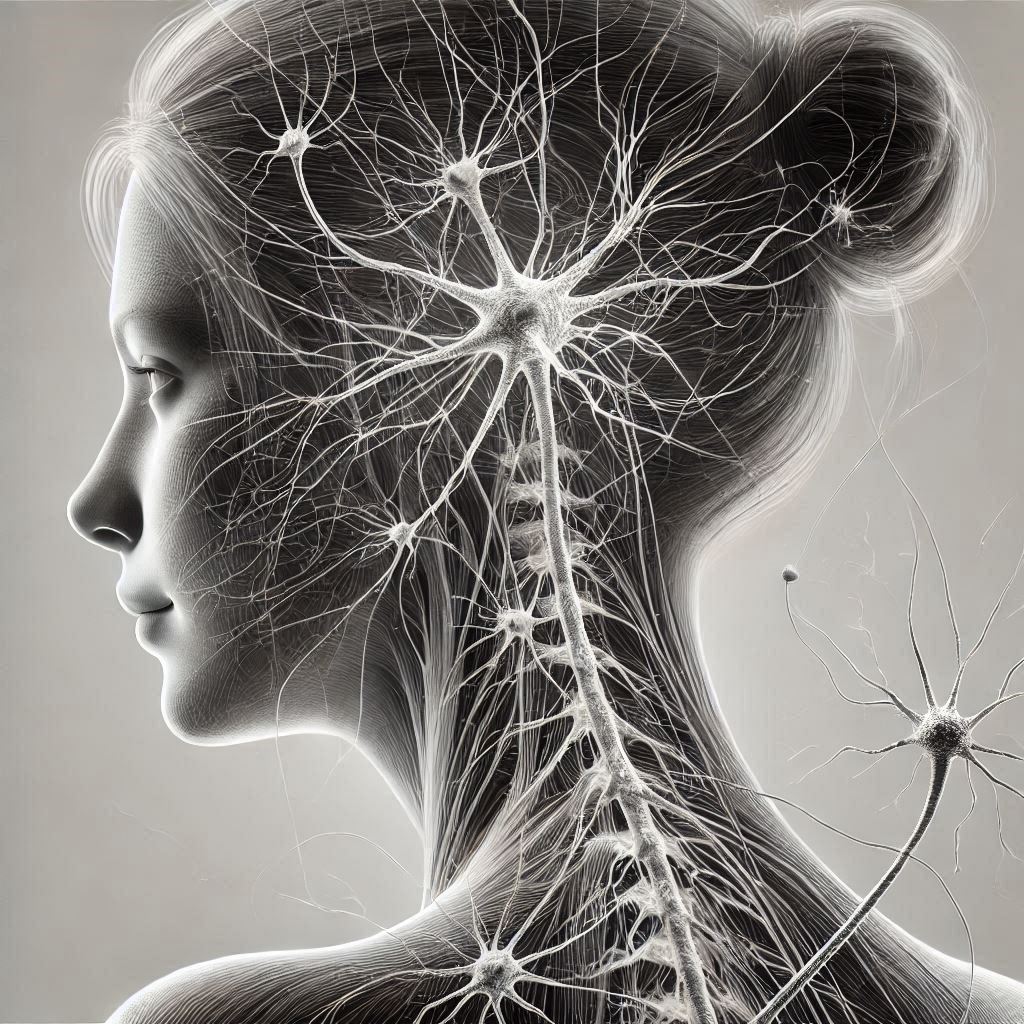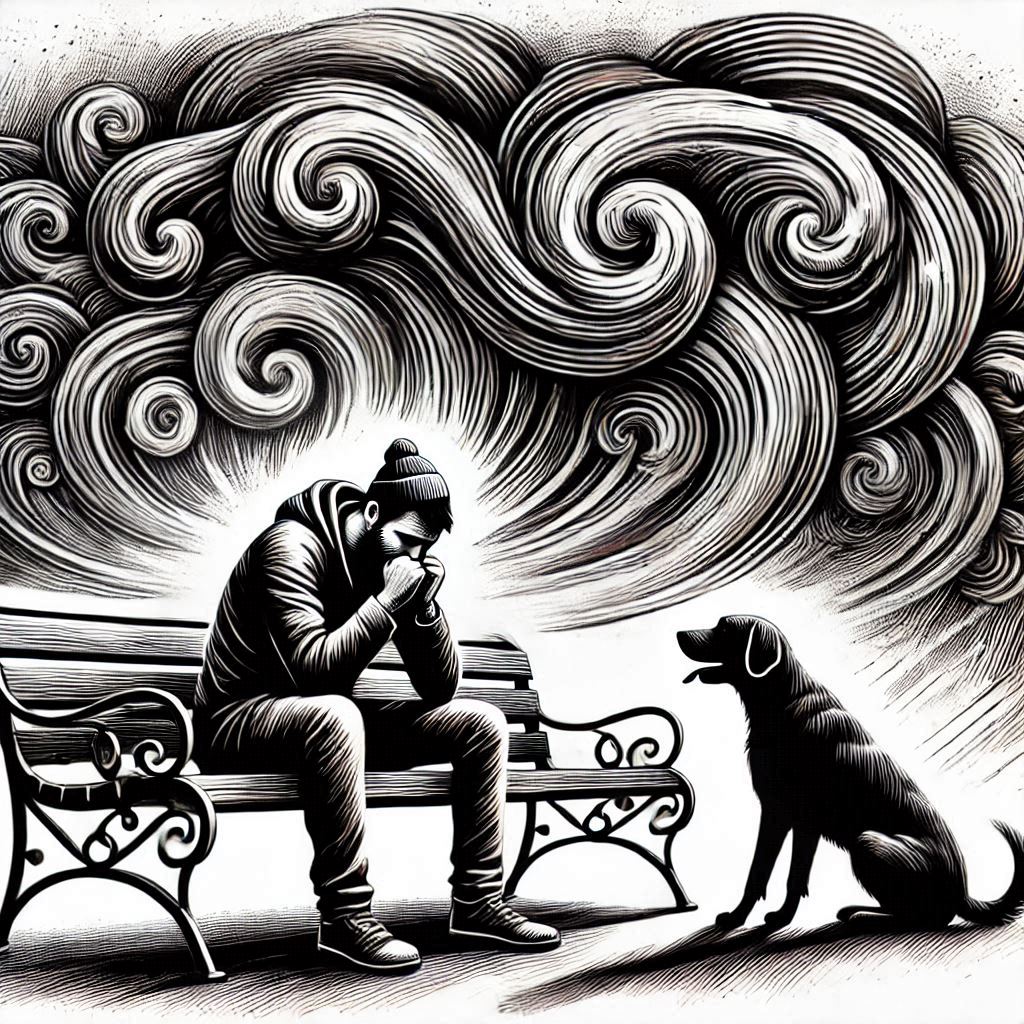Many people experience overlapping symptoms that blur the lines between different diagnoses. Understanding this interconnectedness is crucial for those facing these challenges daily. In this post, we’ll unpack the complex relationships between panic disorder and various mental health issues, offering insights and practical advice. Whether you’re struggling with these conditions or supporting someone who is, you’ll find valuable information that can make a real difference. Let’s dive into this together and uncover the connections that shape our mental well-being.
What is Panic Disorder?
Panic Disorder is a mental health condition that can disrupt daily life. People with panic disorder experience sudden and intense periods of fear called panic attacks. These attacks can occur without warning and often cause powerful physical and emotional symptoms. The feelings during a panic attack can be overwhelming and frightening, sometimes making everyday tasks seem impossible.
Symptoms of Panic Disorder
Panic disorder is marked by several key symptoms that can affect both the body and the mind. Understanding these symptoms can help identify the condition and seek appropriate help.
- Sudden and Repeated Panic Attacks:
- Panic attacks are the hallmark of this disorder. They happen suddenly and can strike at any time. During an attack, a person might feel intense fear, as if something terrible is about to happen. These feelings often peak within minutes but can leave a lasting impact.
- Physical Manifestations:
- Panic attacks come with many physical symptoms that can be quite distressing. These may include:
- Rapid Heartbeat: Often, the heart feels like it’s pounding out of the chest.
- Sweating: Excessive sweating, even in cool environments.
- Trembling: Uncontrollable shaking or trembling.
- Shortness of Breath: Feeling like you can’t catch your breath.
- Chest Pain: It can feel like you’re having a heart attack.
- Dizziness: A sensation of being lightheaded or faint.
- Nausea: Feeling sick to your stomach during an attack.
- Tingling Sensations: Sensations of numbness or tingling, especially in the hands and feet.
- Panic attacks come with many physical symptoms that can be quite distressing. These may include:
- Emotional Manifestations:
- Panic disorder also affects emotional well-being. During an attack, there could be:
- Fear of Losing Control: Feeling like you might go crazy or be unable to control yourself.
- Fear of Dying: An intense fear that you might die during the attack.
- Detachment from Reality: Feeling disconnected from yourself or your surroundings, as if things aren’t real.
- Panic disorder also affects emotional well-being. During an attack, there could be:
Identifying these symptoms can lead to better management. If you suspect you or a loved one has panic disorder, seeking professional help is a crucial first step. Effective treatment options include therapy, medication, and lifestyle changes that can lead to significant improvements. For more detailed information, visit reliable sources like the Mayo Clinic or the National Institute of Mental Health.
Overlap with Other Mental Health Conditions
Understanding how panic disorder intersects with other mental health conditions sheds light on the complexities individuals may face. Let’s dive into the connections with various mental health issues:
Anxiety Disorders
Panic disorder often intertwines with other anxiety-related conditions such as generalized anxiety disorder (GAD) and social anxiety disorder. Individuals with panic disorder may experience heightened levels of fear and worry, overlapping with symptoms of other anxiety disorders, including:
- Generalized Anxiety Disorder (GAD): Characterized by constant and excessive worry about everyday things. People with GAD may also experience restlessness, fatigue, and difficulty concentrating. Panic disorder can amplify these symptoms, making it harder to manage daily life.
- Social Anxiety Disorder: This involves intense fear or anxiety in social situations. The fear of being judged or embarrassed can lead to avoidance behaviors. When combined with panic disorder, the fear can become overwhelming, making social interactions even more challenging.
Recognizing these overlaps is key in providing effective treatment. For more information on different anxiety disorders, visit the Anxiety and Depression Association of America.
Depressive Disorders
The link between panic disorder and depressive disorders like major depressive disorder, persistent depressive disorder, and bipolar disorder is significant. Shared symptoms such as feelings of despair, low mood, and loss of interest can complicate the diagnosis and treatment of these conditions.
- Major Depressive Disorder: This condition involves persistent feelings of sadness and loss of interest in activities once enjoyed. When coupled with panic disorder, individuals may feel a heightened sense of hopelessness and dread.
- Persistent Depressive Disorder: Also known as dysthymia, this is a chronic form of depression. The long-term nature of this condition, combined with the acute episodes of panic disorder, can create a daunting mental health challenge.
- Bipolar Disorder: Characterized by extreme mood swings, ranging from manic highs to depressive lows. Panic disorder can exacerbate the depressive episodes, adding layers of anxiety and fear to the existing mood fluctuations.
Exploring the relationship between panic disorder and depressive disorders can provide a better understanding of these complexities. For further information, consider resources from the National Alliance on Mental Illness.
Obsessive-Compulsive Disorder (OCD)
Panic disorder and obsessive-compulsive disorder (OCD) can coexist, presenting individuals with a unique set of challenges. The intrusive thoughts and compulsive behaviors characteristic of OCD may overlap with the intense fears and worries experienced during panic attacks.
- Intrusive Thoughts: These are unwanted thoughts that can be distressing and persistent. In OCD, these thoughts often lead to compulsive behaviors. When combined with panic disorder, the anxiety from these thoughts can lead to frequent panic attacks.
- Compulsive Behaviors: Actions performed to reduce the anxiety caused by intrusive thoughts. Individuals with both OCD and panic disorder may find that their compulsions are not enough to alleviate their panic, leading to a cycle of anxiety and fear.
Understanding the connections between panic disorder and OCD is crucial for tailored treatment approaches that address both conditions effectively. To learn more about OCD, explore content from the International OCD Foundation.
Post-Traumatic Stress Disorder (PTSD)
Individuals who have experienced trauma may find themselves navigating both panic disorder and post-traumatic stress disorder (PTSD). The impact of past trauma can manifest in symptoms that align with panic disorder, amplifying feelings of fear and vulnerability.
- Re-Experiencing Trauma: Flashbacks and nightmares are common in PTSD. These experiences can trigger panic attacks, causing individuals to relive their trauma with the added burden of intense fear.
- Avoidance: Individuals with PTSD may avoid places, people, or activities that remind them of the trauma. When combined with panic disorder, this avoidance can be more pronounced, limiting their everyday activities and interactions.
- Hyperarousal: Increased anxiety and constant alertness are common in PTSD. The overlap with panic disorder can result in a heightened state of fear and anxiety, making it difficult for individuals to feel safe.
Recognizing how panic disorder and PTSD can coexist is essential in providing comprehensive care and support. To learn more about PTSD, reputable sources like the Sidran Institute offer valuable insights.
Unraveling the intricate connections between panic disorder and other mental health conditions underscores the need for a holistic approach to mental well-being. By acknowledging and addressing these overlaps, individuals can embark on a journey towards better understanding and managing their mental health.
Understanding the Comorbidity
Ever wondered why some people face more than one mental health issue at the same time? Let’s dive into the world of comorbidity, where panic disorder often overlaps with other mental health conditions, creating a complex web of challenges and experiences.
Risk Factors for Comorbidity
Why do some people develop multiple mental health conditions alongside panic disorder? Several factors can come into play:
- Genetic Predispositions: If mental health issues run in your family, you’re more likely to experience multiple conditions yourself.
- Environmental Stressors: High-stress environments, whether due to work, family, or social issues, can trigger overlapping conditions.
- Past Traumas: Experiencing trauma, especially in childhood, can lead to various mental health problems, including panic disorder.
- Neurobiological Differences: Chemical imbalances in the brain can make individuals susceptible to multiple disorders.
- Shared Symptoms: Conditions like anxiety and depression often have overlapping symptoms, making it easier for one to trigger the other.
Knowing these risk factors can help in catching signs early and seeking comprehensive treatment. For more on the genetic and environmental influences on mental health, check out the National Institute on Drug Abuse.
Impact on Treatment Strategies
When dealing with more than one mental health condition, treatment becomes a bit of a juggling act. Here’s how comorbidity affects treatment planning:
- Multidimensional Approaches: Therapists may use a combination of treatments, including cognitive-behavioral therapy (CBT), medication, and lifestyle changes, to address all conditions.
- Medication Responses: Some medications work better for certain conditions and worse for others. Doctors need to find a balance that treats all coexisting issues effectively.
- Therapeutic Efficacy: Therapy sessions might need to cover a broader range of issues, making them more complex but also more comprehensive.
- Quality of Life: Addressing multiple conditions can significantly improve your overall well-being and daily functioning.
Understanding the impact of comorbid mental health conditions can make a big difference in how treatment plans are designed and implemented. For more insights on creating effective treatment strategies, visit the American Psychological Association.
Living with multiple mental health conditions can be tough, but knowledge and the right approach can make managing them much easier. The journey toward mental well-being is unique for everyone, but recognizing and addressing comorbidity is a crucial step.
Managing Panic Disorder and Co-occurring Conditions
Navigating the intricate web of panic disorder alongside other mental health conditions requires a multifaceted approach that considers therapeutic interventions and self-care strategies. Let’s explore how individuals can effectively manage these challenges:
Therapeutic Interventions
When facing panic disorder and co-existing mental health conditions, a comprehensive treatment plan incorporating various therapeutic interventions is essential for holistic well-being:
- Psychotherapy: Engaging in psychotherapy, such as cognitive-behavioral therapy (CBT), can help individuals understand and manage their thoughts and behaviors during panic attacks. Therapy sessions provide a safe space to explore triggers and develop coping mechanisms.
- Medication: In some cases, medication prescribed by a mental health professional may be necessary to alleviate symptoms of panic disorder and other co-occurring conditions. Medications such as antidepressants or anti-anxiety drugs can help regulate mood and reduce the frequency of panic attacks.
- Lifestyle Modifications: Adopting healthy lifestyle changes, including regular exercise, balanced nutrition, and sufficient rest, can complement traditional therapies in managing symptoms. Stress-reducing activities like mindfulness meditation and yoga can also contribute to an overall sense of well-being.
Exploring the effectiveness of these interventions in conjunction with professional guidance can significantly improve the quality of life for individuals dealing with multiple mental health challenges.
Self-C Care Strategies
In addition to professional support, incorporating self-care strategies into daily routines can empower individuals to better cope with the complexities of panic disorder and co-occurring conditions:
- Mindfulness Practices: Practicing mindfulness techniques, such as deep breathing exercises and meditation, can help individuals stay grounded during moments of heightened anxiety. Mindfulness fosters present-moment awareness and promotes emotional regulation.
- Physical Activity: Engaging in regular physical exercise not only benefits physical health but also plays a crucial role in managing mental well-being. Physical activity releases endorphins that act as natural mood lifters and stress reducers.
- Healthy Boundaries: Setting healthy boundaries in relationships and at work can help individuals manage stress more effectively. Learning to prioritize self-care and saying no when necessary are essential aspects of maintaining emotional balance.
- Support Networks: Building a strong support system of friends, family, or support groups can provide invaluable emotional backing during challenging times. Sharing experiences and seeking understanding can lessen the sense of isolation that often accompanies mental health struggles.
By incorporating these self-care strategies into daily life, individuals can cultivate resilience and enhance their ability to navigate the complexities of multiple mental health conditions.
For more detailed insights on managing panic disorder and co-occurring conditions holistically, check out resources from reputable sources such as the Anxiety and Depression Association of America.
Breaking the Stigma and Seeking Support
It’s time to talk about breaking the stigma surrounding mental health and embracing the crucial step of seeking support when facing challenges. Let’s delve into why seeking help is not a sign of weakness but a bold move towards healing and empowerment.
Deconstructing the Stigma
The stigma surrounding mental health has often cast shadows of shame and silence, but it’s essential to understand that struggles with mental well-being are normal and valid. By challenging outdated beliefs and societal norms, we pave the way for open conversations that foster understanding and compassion.
- Shifting Perspectives: Embracing the idea that mental health is just as vital as physical health can reshape our attitudes towards seeking help. Let’s break free from misconceptions and celebrate the courage it takes to prioritize self-care.
- Destigmatizing Conversations: By engaging in candid discussions about mental health, we create a safe space for individuals to share their stories without fear of judgment. Let’s encourage empathy and support, acknowledging that we’re all navigating our unique journeys.
The Power of Seeking Support
Reaching out for support is a powerful choice that can transform the way we navigate challenges. Whether it’s through professional counseling, support groups, or trusted friends, seeking help is a beacon of hope that illuminates our path to healing.
- Professional Guidance: Therapists and mental health professionals offer valuable insights and strategies to manage mental health conditions. Their expertise can provide clarity and guidance as we work towards holistic well-being.
- Community Connections: Joining support groups or online communities can foster a sense of belonging and understanding. Sharing experiences and receiving peer support can remind us that we’re not alone in our struggles.
- Personal Networks: Lean on trusted friends and family members who offer a listening ear and unwavering support. Opening up about our challenges can strengthen connections and nurture a sense of community.
Seeking support is a courageous step towards self-compassion and growth. Let’s embrace the journey of healing with open hearts and a firm belief in the power of connection.
For more resources on mental health advocacy and support, explore trusted platforms like the National Alliance on Mental Illness and Mental Health America.
Conclusion
Navigating the intricate web of panic disorder and its connections with other mental health conditions requires more than just a one-size-fits-all approach. It demands compassion, understanding, and a multifaceted treatment strategy that acknowledges the nuances of our individual experiences.
As we unravel the complexities of these interconnected conditions, we realize that no two journeys are the same. Each step forward is a unique dance of resilience, self-discovery, and acceptance. It’s about embracing the messy blend of emotions and symptoms, knowing that healing isn’t always linear but filled with twists, turns, and unexpected moments of growth.
So, as we break the stigma and seek support, let’s remember that it’s okay not to have all the answers, to stumble along the way, and to lean on others when the weight feels too heavy. In this journey toward mental well-being, every small step counts, every setback teaches, and every moment of connection reminds us that we’re never truly alone.
By approaching these challenges with open hearts, a willingness to learn, and a touch of humor, we can shift the narrative from one of stigma to one of strength. It’s not just about managing conditions; it’s about reclaiming our stories, rewriting our narratives, and embracing the undeniable truth that our struggles do not define us but shape us into resilient beings capable of weathering any storm.
So, let’s continue this journey with courage, grace, and a dash of optimism, knowing that within the depths of our complexities lies a tapestry of strength waiting to be woven. Together, let’s navigate the seas of uncertainty, armed with compassion, understanding, and the unwavering belief that healing is not just a destination but a continuous evolution of self.
For more on mental health advocacy and navigating life’s challenges with resilience and compassion, remember to explore resources from organizations like the National Alliance on Mental Illness and Mental Health America. Our stories are vast, our voices powerful, and our journeys worthy of compassion and understanding.








